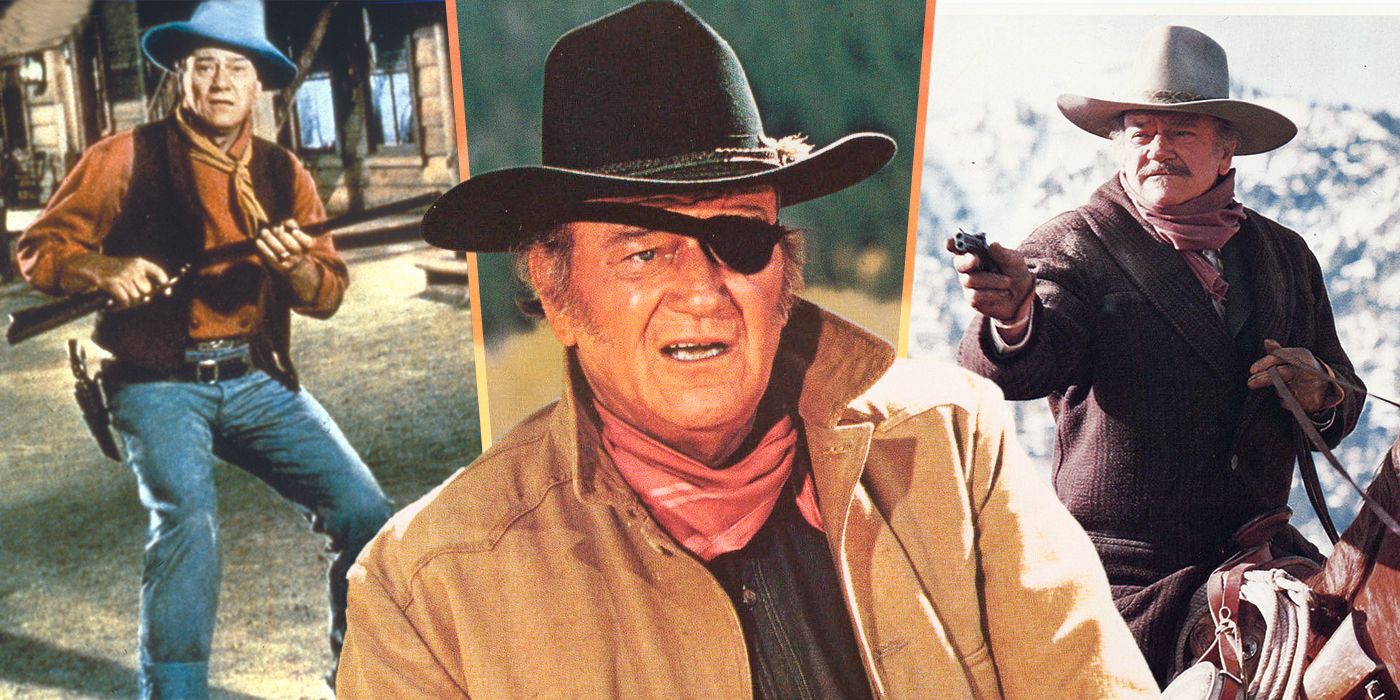
Have you ever come across Marion Robert Morrison? His more popular stage name was John Wayne, a renowned actor during Hollywood’s golden era who significantly contributed to the success of the western genre. With his rugged charisma and tough demeanor, he embodied the perfect cinematic icon for that time period and produced numerous hits. Though he ventured into war movies as well, it was his portrayal of outlaws, heroes, and gunslingers that truly resonated with audiences, reflecting their admiration for raw-edged bravery. It’s no wonder that he eventually earned an Academy Award for Best Actor in True Grit, a testament to his exceptional acting skills.
As a film enthusiast, I can’t help but admire the legendary John Wayne, whose impact on cinema is undeniable. It wasn’t just his accomplishments that filmmakers and actors aspired to, but the thrilling action sequences he masterfully crafted that audiences will likely remember most. Whether it was a desperate stand against a horde of outlaws or a climactic showdown, Wayne created cinematic legends with every scene.
His movies were always meant for the grandeur of the big screen, as he expertly manipulated the camera to focus on his nuanced performances. The subtleties in his acting choices were never lost during those high-octane action sequences. His signature style and seasoned presence could be felt in every interaction, even during tense and violent moments.
John Wayne’s back catalog is filled with iconic shootouts that are must-sees, but some of the best are truly unforgettable.
Ethan Edwards Is Forced to Back Down
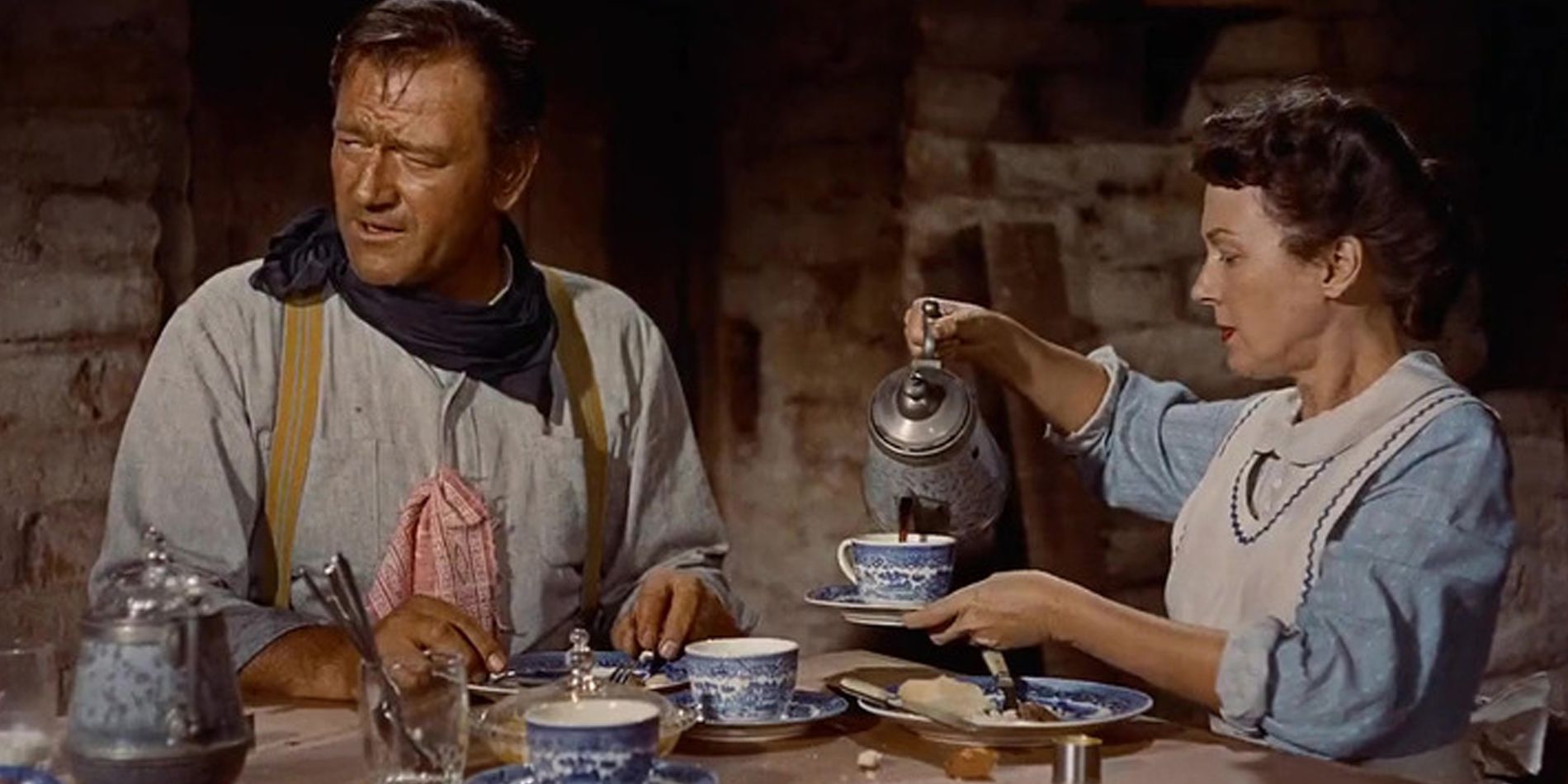
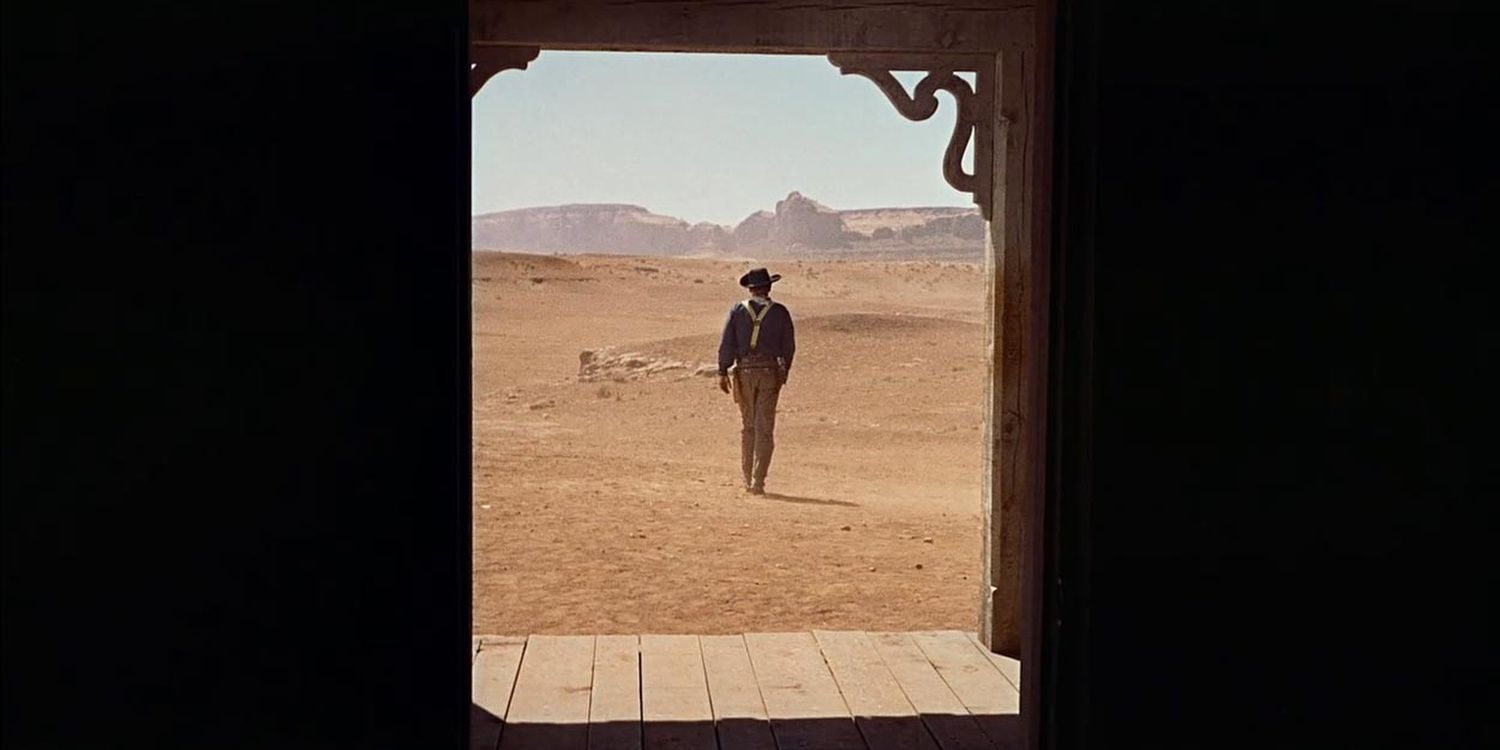

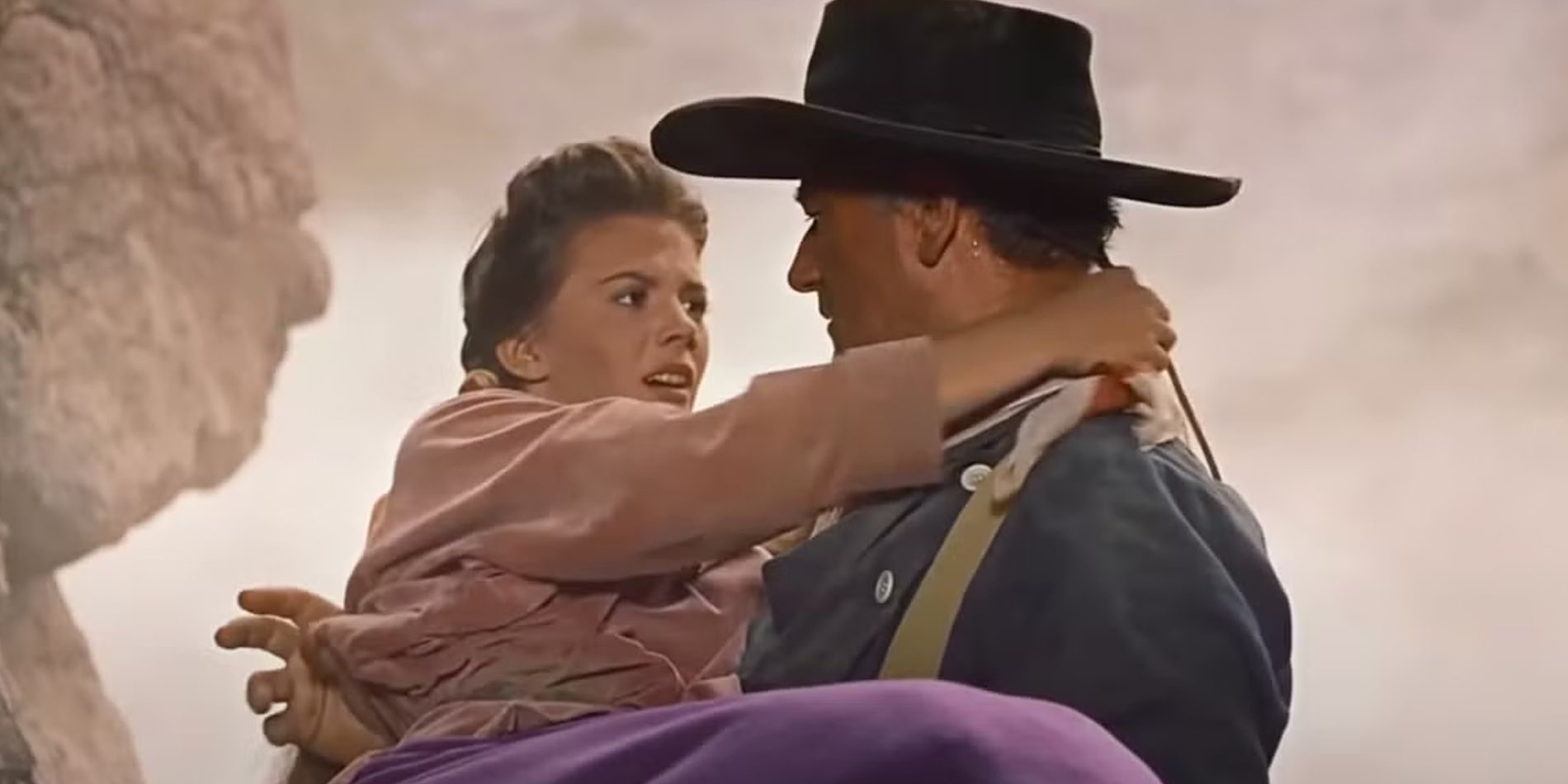
The main idea in “The Searchers” revolves around the interactions between Native Americans and white settlers on their land. This was a groundbreaking portrayal for its time, even though it wasn’t perfect. However, it served as an important illustration of evolving perspectives and bolder political storytelling. In this specific shootout scene, John Wayne’s character shows a wildness that his companions must control, which is different from other characters he played in his films.
The gunfight takes place near a water source, with a band of Native Americans approaching Wayne and his companions. The gunmen start firing, trying to push their perceived adversaries away. Yet, as the Natives retreat, Ethan Edwards persists in shooting, finding enjoyment in eliminating them one by one. During this confrontation, there’s a strong bond between the characters, and thrilling action unfolds. However, it is Ethan’s persistent firing that adds depth to the scene, revealing deeper themes of the movie. In this single gunfight, the film’s central ideas are scrutinized more closely.
It’s a Heartbreaking End for the Veteran
In the film “The Cowboys,” it may appear unusual that a shootout could lead to the protagonist’s demise, but occasionally, even heroes can’t escape unharmed. This is exactly what transpires in this movie, where viewers are forced to witness Wayne’s tragic end! Portraying rancher Wil Andersen, the veteran character serves as a protective figure for the children under his charge and takes pride in their advancements. However, he communicates this sense of pride while confronting his own mortality.
In a heated confrontation with Asa Watts, Wayne finds himself engaging in a brutal hand-to-hand combat, during which he skillfully disarms and overpowers Watts. The fight, meticulously staged and packed with powerful blows, ends with Wayne withdrawing victoriously. However, just as Wayne turns his back, a gun battle erupts between them. Watts seizes the opportunity, firing several shots at an unsuspecting Wayne, after being dared to do so. This act of defiance strips Watts of any remaining dignity, while Wayne’s restraint in the situation is commendable. The scene is so intense that viewers momentarily forget to breathe.
One of Wayne’s First Shootouts Is Still Memorable
Often regarded as one of John Wayne’s initial gunfights on screen, “Red River” played a crucial role in the actor’s career during the late 1940s. This film played a significant part in solidifying his presence within the genre. In this movie, Thomas Dunson is portrayed as a tough-as-nails prospective rancher with a past on a wagon trail. The film demanded a scene that would define Wayne as a hero and establish Dunson as a rough, no-nonsense character who acted before thinking. This iconic shootout was thus created.
Back then, I found myself facing two men on horses, and without a moment’s hesitation, I drew my weapon with unwavering confidence. Noticing one of them reaching for his weapon, I swiftly acted, disarming him before he could even fire. The other man seemed to reconsider any hostile intentions, clearly intimidated by my quick reflexes and marksmanship. It was a brief encounter, but the message it conveyed was undeniably strong, delivered through a few decisive actions.
John Wayne’s Comedic Performances Are Underrated
John Wayne occasionally gets to speak some humorous dialogue, and he always excels when he does so. It’s an underestimated talent of the actor to be able to deliver even the most absurd lines with complete seriousness. In the movie “Big Jake“, there may not be a more fitting demonstration than the shower scene, where a sudden gunfight leaves viewers amazed, for both good and bad reasons.
In “Big Jake,” John Wayne plays the character Jacob McCandles, who is menaced with a gun while he’s taking a shower. As he wraps up drying off, he learns that his time is running out. Instead of succumbing, Wayne surprises everyone by producing a hidden weapon and shoots down his adversary in a humorous twist. This scene stands in stark contrast to his numerous heroic acts throughout the film.
This Scene Proves to Be Just as Much About the Buildup
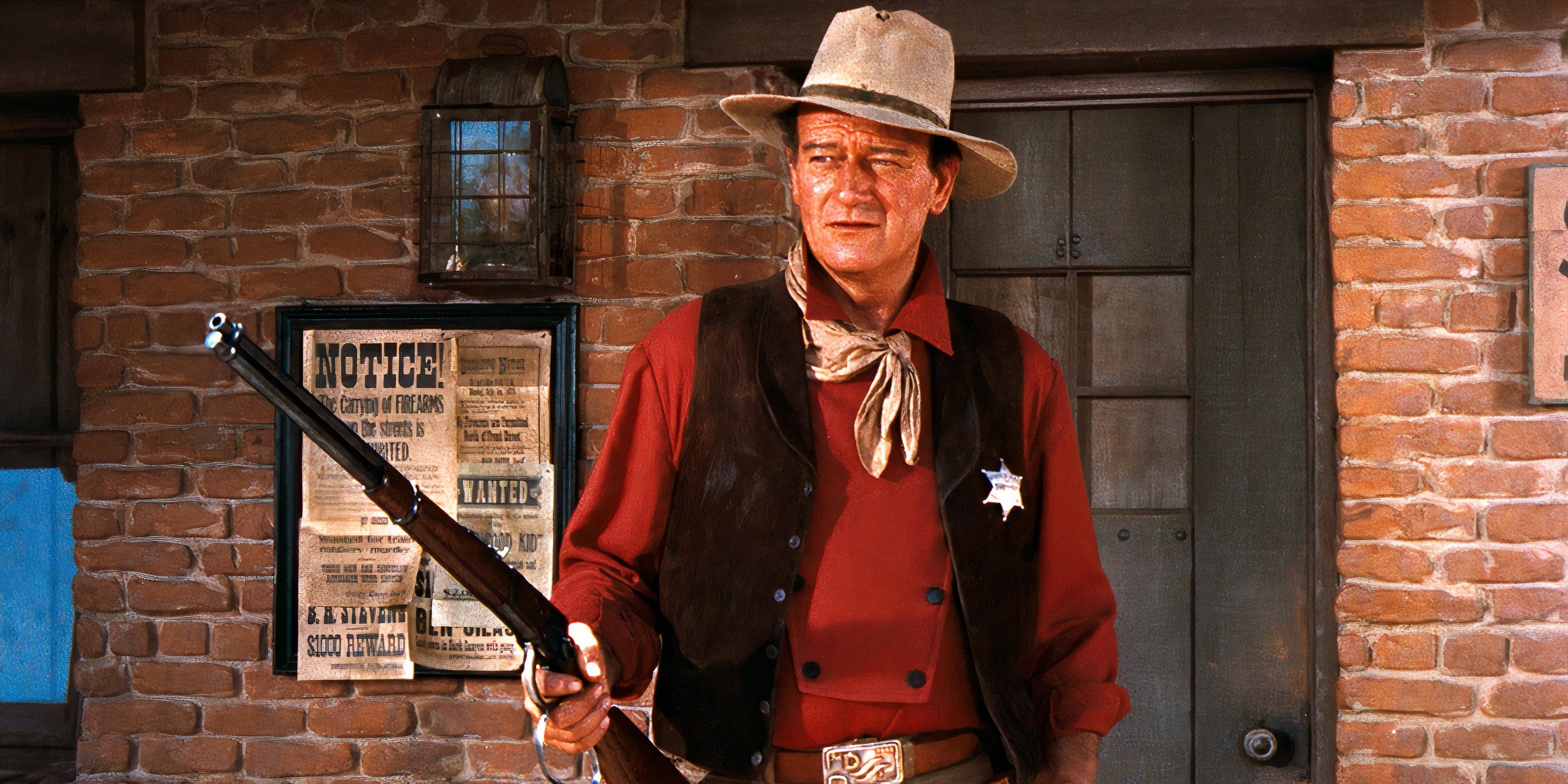
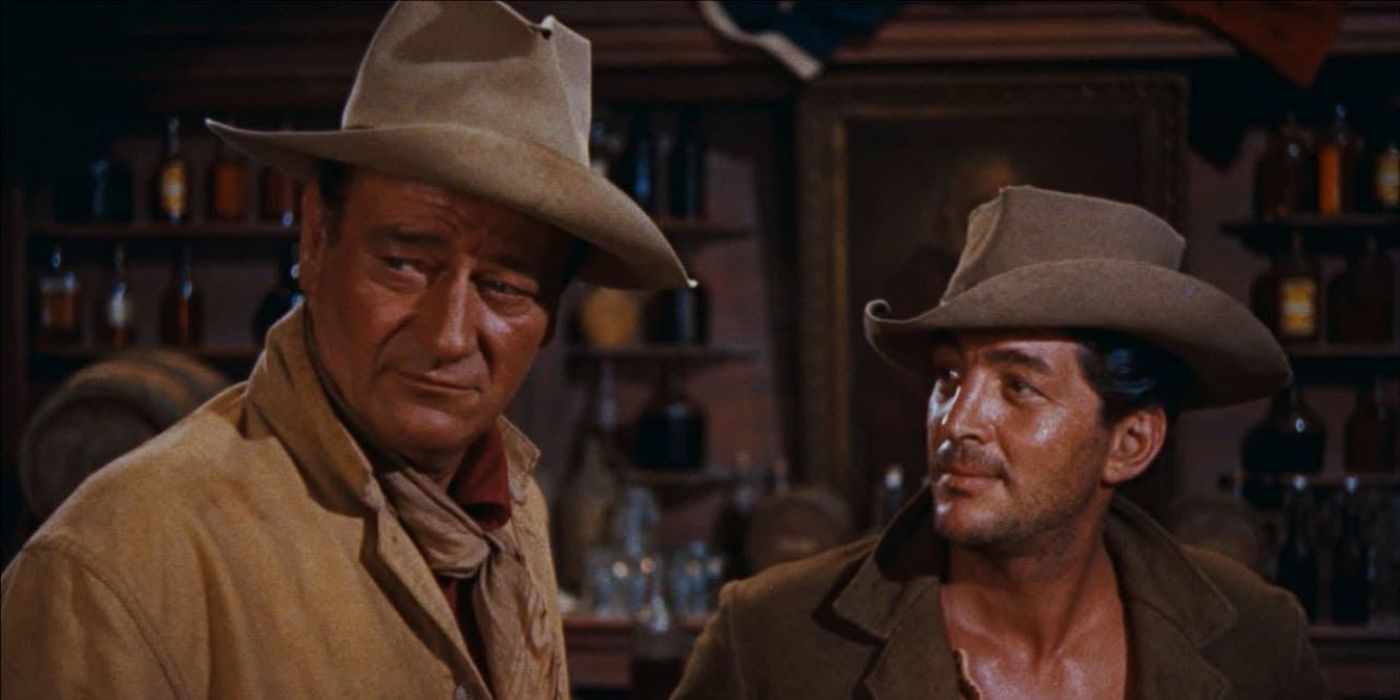
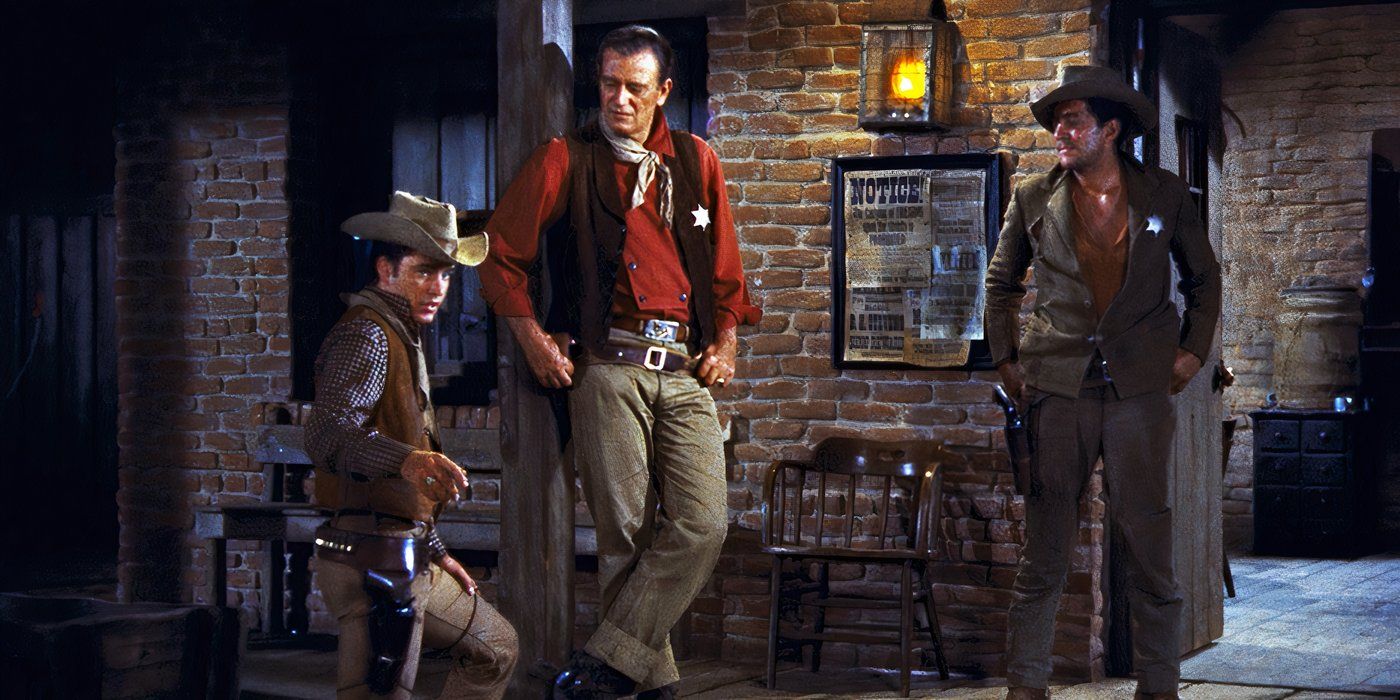
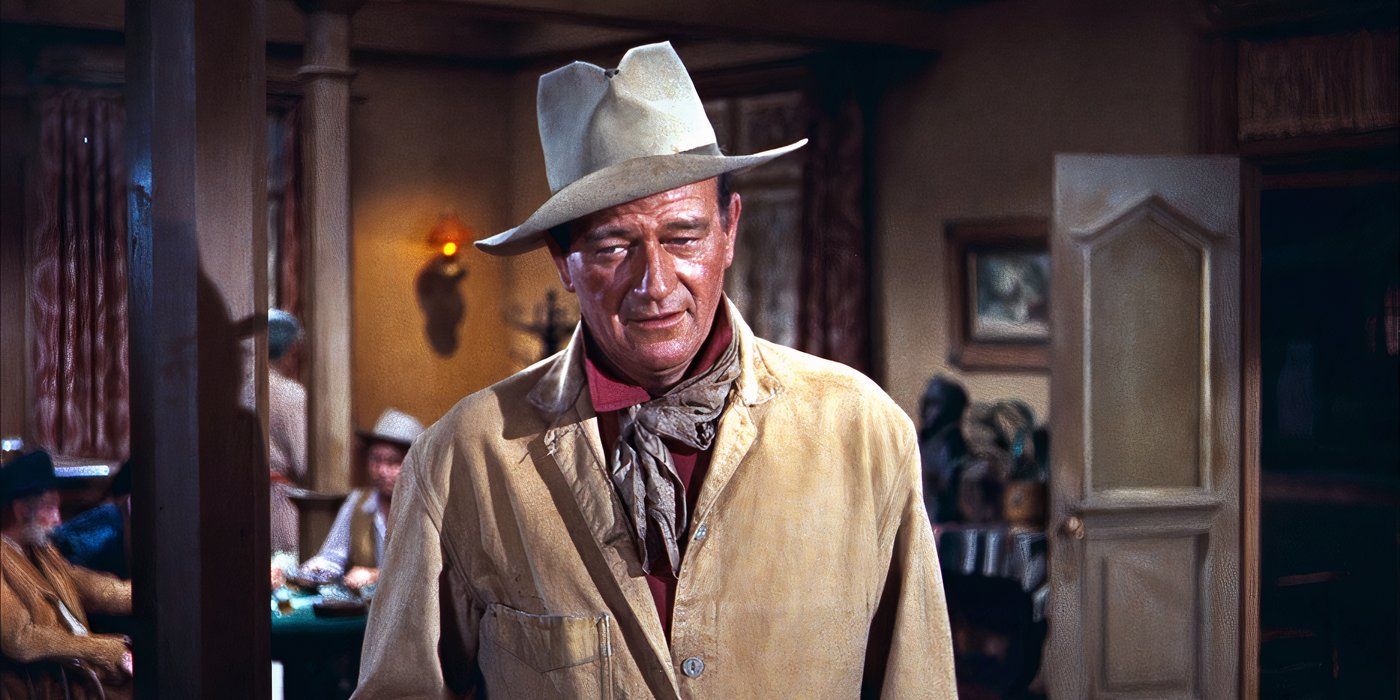
Gunfights can assume various shapes. They might resemble a traditional one-versus-one confrontation, or they could be arranged as an extended skirmish involving fistfights and external factors altering the situation’s flow. Yet, there are times when spectators yearn for total pandemonium, and that is exactly what occurs in the climactic shootout from Rio Bravo. The stage is meticulously set, with the visuals carefully crafted to ensure that the setting is vividly depicted for viewers, making it easy for them to grasp the scene’s layout. A palpable tension fills the air before the melee begins.
The confrontation with the Burdette Gang initiates, with John T. Chance of Wayne trying to seize control. Hiding in the dilapidated town, Wayne ultimately makes a daring move by exiting their sanctuary to notify an associate about a cart laden with dynamite. With this fresh knowledge, another strategy is devised, culminating in Wayne firing at a moving target, causing a stick of dynamite to detonate, escalating the fight dramatically. This pulse-pounding sequence enhances the hero’s status and contributes to the creation of an enduring cinematic masterpiece. And throughout this ordeal, Wayne engages in witty banter, showcasing his unique charm.
This Shootout Gets Out of Control
Repeating the same formula for shootouts can grow monotonous. Even a showdown may only offer a few surprises when viewers have already witnessed countless versions. However, “Rooster Cogburn” provides John Wayne an opportunity to star in an action sequence that breaks away from the usual pattern – one filled with gunfire, explosions, and Mother Nature unleashing her fury.
In this rendition, John Wayne plays the leading role as Rooster Cogburn, who finds himself under siege. A prolonged skirmish ensues, with Wayne and his companions seeking refuge on a vessel when the conflict intensifies. Armed with a massive weapon, Wayne attempts to repel the adversaries. As they approach tumultuous waters, dynamite submerged in the river, and riders closing in on their position, the group must act swiftly to escape the impending danger. This sequence presents an exciting display of cinematic ingenuity, deviating from John Wayne’s typical roles.
This Is a Classic Saloon Scene With a Twist
In Western movies, what’s more common than a scene at the saloon? Well, countless bar fights have unfolded throughout cinematic history, but El Dorado offers a unique spin on this classic trope. Typically, when Cole Thornton walks into a bar, it looks like chaos could erupt any second. However, rather than engaging in a brawl, he guides his foes through the back door, setting up an ambush once they arrive. This subtle tactic showcases Thornton’s cleverness and underscores his intimidating aura.
The gunfight isn’t overly complex, but Wayne manages to pin down his adversary, pushing them out with precise shots. It appears he might do the same with another foe, but then freezes up during the action. This unexpected and somewhat amusing conclusion to the scene showcases how Wayne’s films keep subverting expectations. In a clever move in filmmaking, this allows the antagonist to gain an advantage over Wayne without making him seem defeated.
This Is a Goodbye That No One Expected
The Shootist marks a poignant farewell for John Wayne in his acting career, as it is his last on-screen appearance before he passed away. It’s particularly poignant that this film is set in the Western genre, leading many critics to interpret this as a heartfelt goodbye between Wayne and his audience. In the movie, Wayne embodies J.B. Books, a character who meets an untimely end within a saloon. Surrounded by ambush and attack, Wayne seizes one final opportunity to showcase his signature tough-guy style in combat.
In a series of strategic maneuvers, Wayne skillfully outwits each crook individually, demonstrating that he still possesses considerable strength despite his age and recent injuries. This moment, where he stands tall against adversity, is one that audiences will never forget. However, just as he exits the bar victorious, a hidden assailant attacks from behind, shooting him in cold blood. Fatally wounded, Wayne falls and succumbs to his injuries, paving the way for the emergence of another potential hero. The fates of both Wayne and Books finally intertwine, their pasts coming back to haunt them.
Wayne Is Hidden In the Shadows
In the movie “The Man Who Shot Liberty Valance,” there’s a pivotal scene that happens twice in the film. Initially, the viewer sees the event from the standpoint of those directly involved in the gunfight, including Ranse and Liberty Valance. From this angle, it appears that Ranse was the one who killed the outlaw, providing an unexpected turn of events. However, when we revisit this scene later on, it’s revealed that it wasn’t Ranse who killed Valance at all; in fact, it was he himself who pulled the trigger.
In a skillfully reenacted scene reminiscent of “The Man Who Shot Liberty Valance”, it’s revealed that Wayne’s character, Tom Doniphon, fired at Liberty Valance simultaneously with Ranse. His shot was accurate, hitting the target. Afterwards, he retreats to the shadows, discards his weapon, and resumes his business. This scene is a brilliant demonstration of storytelling through cinematic means, and an effortlessly stylish performance from Wayne, who benefits greatly from Lee Marvin’s chilling portrayal of Valance. The shootout serves as a pivotal moment, encapsulating the entire narrative in a single instance of action.
This Is The Hero Audiences Will Remember
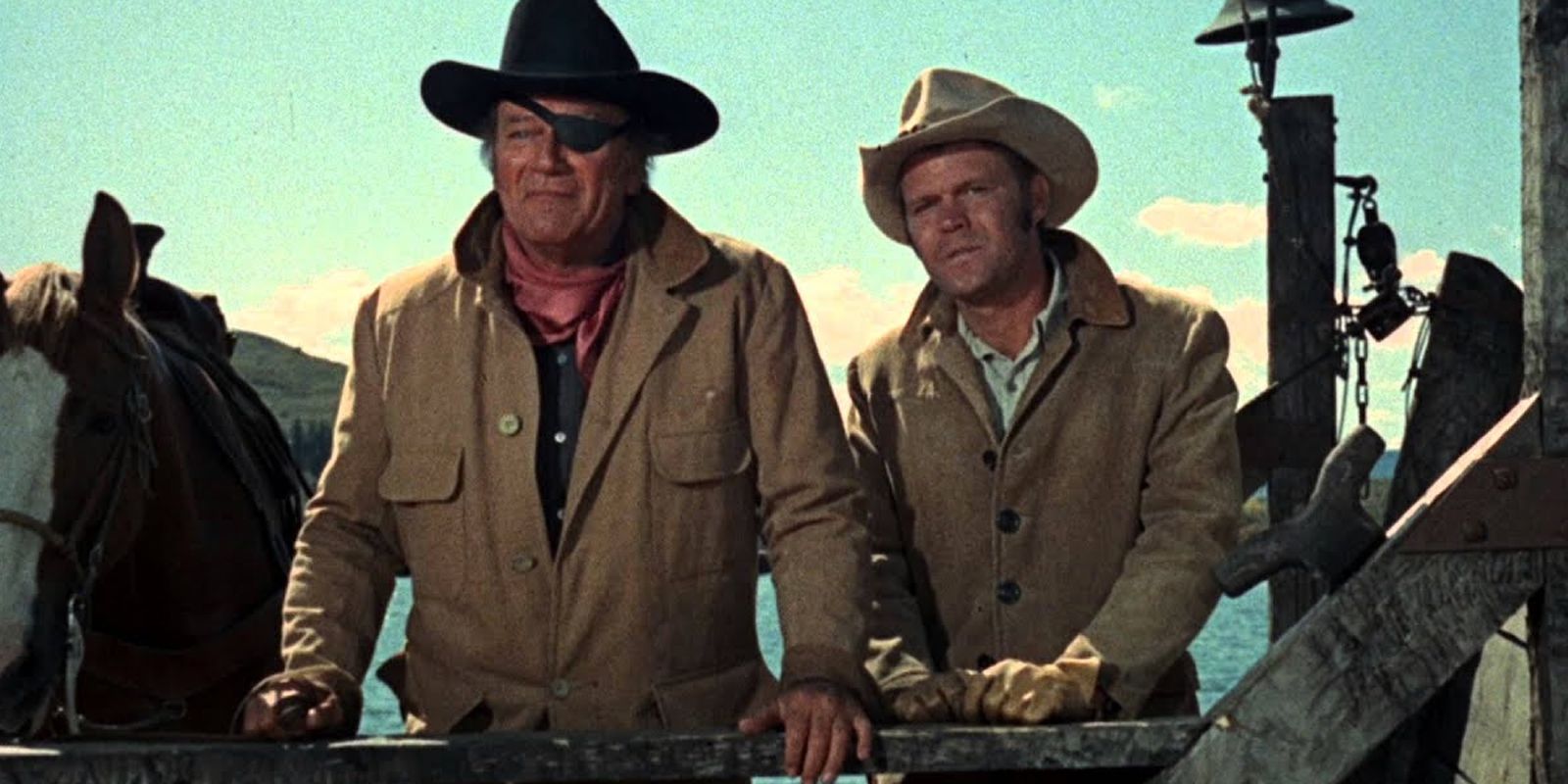
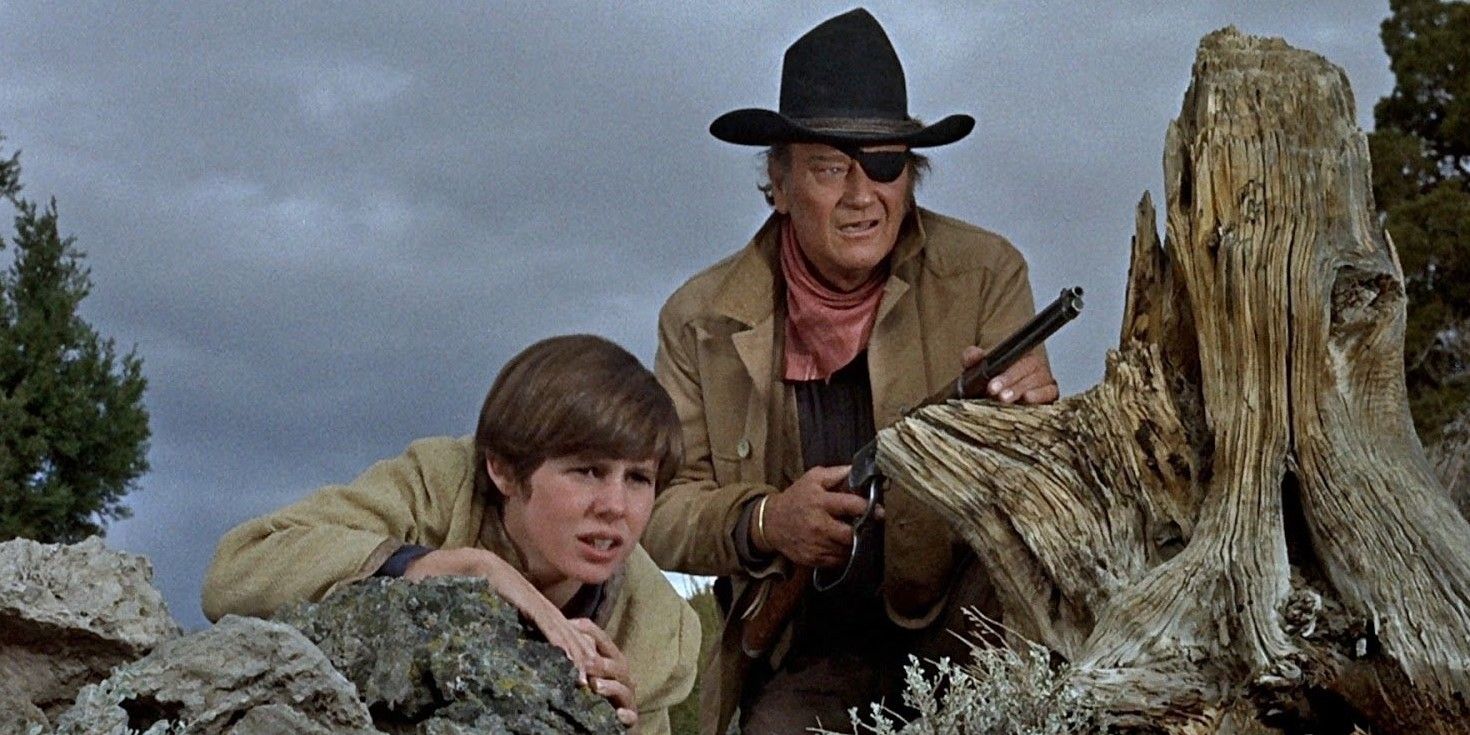
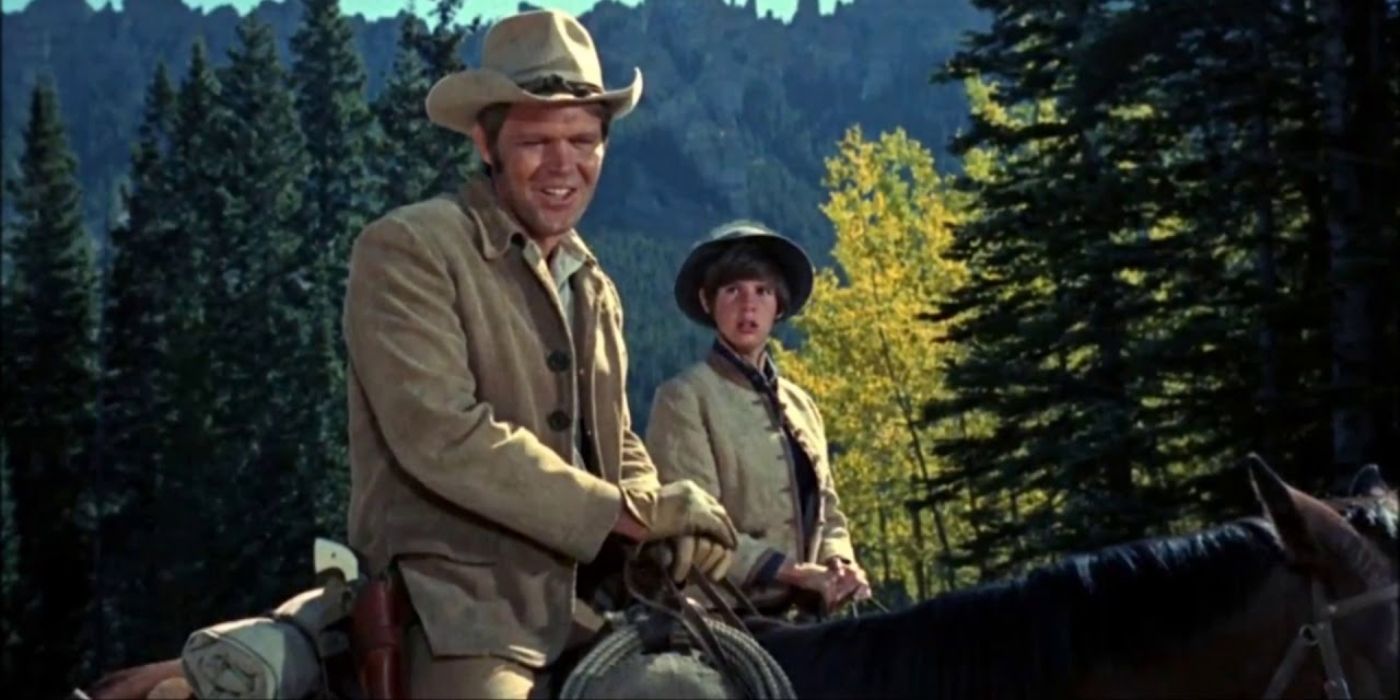
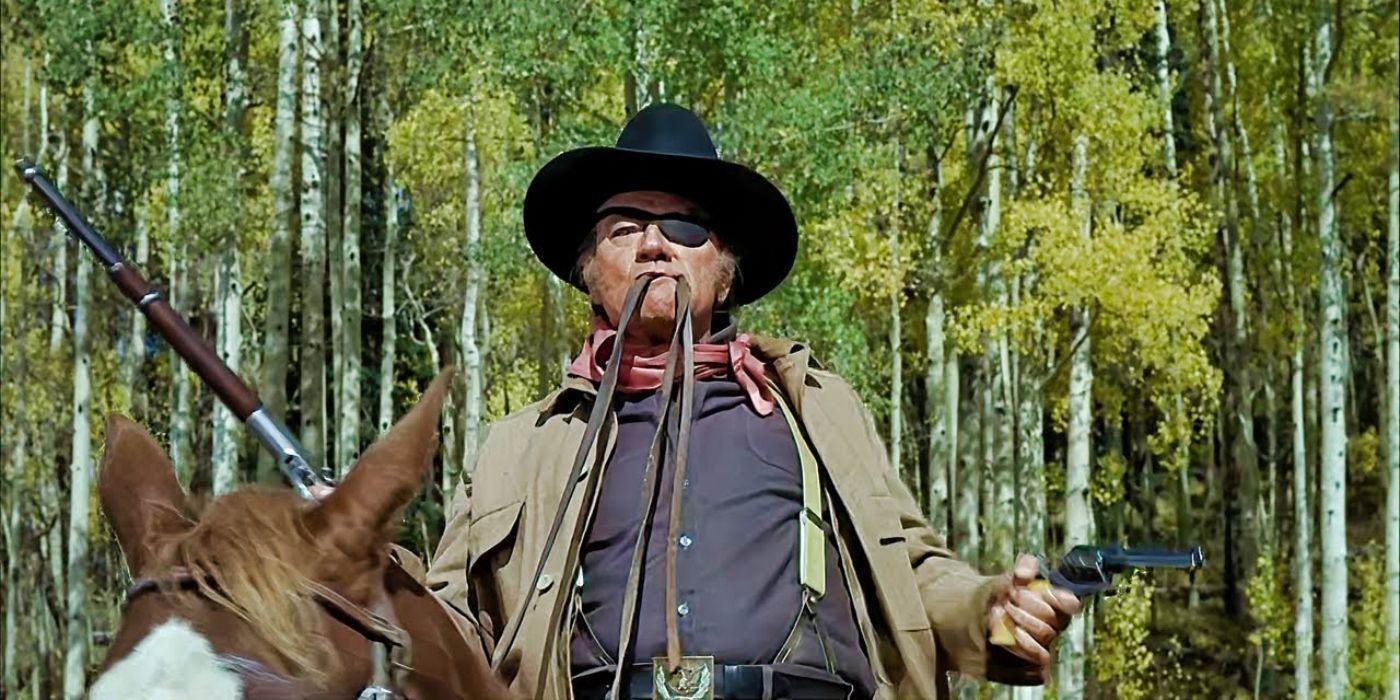
In 1969, the movie “True Grit” became well-known among film enthusiasts as it was this version that initially presented the story to a wide audience. Featuring a stellar cast and John Wayne portraying U.S. Marshal Reuben J. “Rooster” Cogburn, this project significantly boosted Wayne’s critical acclaim and earned him numerous awards. At his career pinnacle, Wayne delivered a cinematic tale that fans had grown accustomed to, and the shootout scene in an open field remains etched in memory.
In a tense situation, with his backup too distant to offer much help, Wayne confronts four adversaries simultaneously, each mounted. Sporting an eyepatch, the seasoned hero charges towards them fearlessly. One by one, he manages to defeat his opponents, demonstrating his mastery, but never appearing invincible. His horse is eventually disabled, leaving him vulnerable, and it seems as though all hope is lost until reinforcements arrive. This scene underscores Wayne’s enduring determination and resilience as a veteran hero who continues to thrive. It’s a remarkable example of how character depth and realistic storytelling can coalesce to create an exhilarating action sequence.
Read More
- Who Is Harley Wallace? The Heartbreaking Truth Behind Bring Her Back’s Dedication
- Basketball Zero Boombox & Music ID Codes – Roblox
- 50 Ankle Break & Score Sound ID Codes for Basketball Zero
- TikToker goes viral with world’s “most expensive” 24k gold Labubu
- Revisiting Peter Jackson’s Epic Monster Masterpiece: King Kong’s Lasting Impact on Cinema
- 100 Most-Watched TV Series of 2024-25 Across Streaming, Broadcast and Cable: ‘Squid Game’ Leads This Season’s Rankers
- How to watch the South Park Donald Trump PSA free online
- League of Legends MSI 2025: Full schedule, qualified teams & more
- KFC launches “Kentucky Fried Comeback” with free chicken and new menu item
- 50 Goal Sound ID Codes for Blue Lock Rivals
2025-07-04 06:52